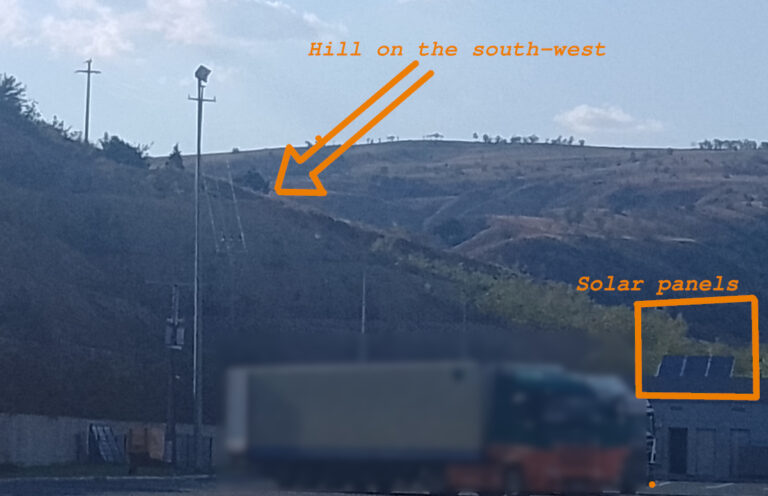Getting the orientation and placement of your solar panels correct is the first and most crucial step. The orientation directly influences how much sunlight your panels can capture during the day. Ideally, panels should face true south in the Northern Hemisphere and true north in the Southern Hemisphere. This positioning maximizes sun exposure throughout the day.
Tilt angle is another key factor to consider. It should be set according to your location’s latitude. For regions farther from the equator, a steeper angle is beneficial, while locations closer to the equator perform better with a lower angle. Many systems have adjustable mounts to modify the tilt seasonally, ensuring optimal efficiency year-round.
One common mistake is overlooking local obstacles. Chimneys, trees, and surrounding buildings can cast shadows on your panels, drastically reducing their efficiency. Using tools or software for a shading analysis can help determine the best spot for your installation. Remember, even a small amount of shade can significantly diminish performance, so it’s something to take very seriously.
Another potential pitfall is improper roof assessment. Ensure your roof’s structure can support the weight of the panels and mounts. An inspection by a structural engineer might save you from future headaches. Also, check for roof warranties and any restrictions they may place on installations.
Avoiding Shading from Surrounding Structures
Shading is a significant deterrent to the efficiency of solar panels. Obstacles like chimneys, trees, and nearby buildings can cast shadows, reducing the system’s overall performance. Ensuring your panels are in a spot with maximum sunlight exposure is essential to harness their full potential.
Start by conducting a thorough shading analysis. Tools like solar pathfinders or apps with satellite imagery can give you a clear picture of potential obstructions throughout the year. Moving an installation a few feet could make a massive difference in energy output.
Consider pruning or even removing trees that might cast shadows during critical sunlight hours. While mature trees add aesthetic value and environmental benefits, their shading can curtail your panels’ efficiency significantly. If pruning isn’t possible, you might need to reevaluate the installation location.
More about obstacles and shadows you can find here
Moreover, future-proofing your placement is wise. Think about potential landscaping or construction changes that could affect sunlight exposure down the road. Plan for growth in your surroundings to avoid unexpected shading in the future.
In cases where shading is unavoidable, optimizing your system with technologies like microinverters or power optimizers can help mitigate the efficiency losses. These devices allow individual panels to perform independently, thus minimizing the impact of a single shaded panel on the entire system.
Every step you take to minimize shading will pay off in higher energy generation and better return on investment. Avoiding these missteps ensures your solar array functions at peak performance.


Choosing the Right Type of Solar Panels
The choice of solar panels greatly affects the efficiency and longevity of your system. Various factors play into this decision, including the specific characteristics of your installation site, local climate, and weather conditions. Each type of solar technology has its advantages, and selecting the right one depends on your unique situation.
Monocrystalline panels are often favored for their high efficiency and sleek design. They perform best in direct sunlight and are ideal for areas where space is limited. If maximizing energy output in a smaller footprint is your goal, these might be your best bet.
Polycrystalline panels, on the other hand, are typically more cost-effective and perform fairly well even under less direct sunlight. They offer a balance between performance and price, making them a popular choice for many residential installations.
Another option is PERC (Passivated Emitter and Rear Cell) technology, which enhances efficiency by reflecting unabsorbed sunlight back into the cell for a second chance of absorption. Panels with PERC technology are excellent for locations with varying sunlight conditions.
It’s crucial to note that bifacial panels, which capture light on both sides, aren’t typically recommended for roof installations. They are more suited to ground-mounted setups where they can leverage reflected sunlight from the ground.
Stick to panels from reputable manufacturers with a history of producing durable and efficient products. Well-known brands with advanced technologies ensure better performance and often come with more comprehensive warranties. Research and reviews from other users can guide you in making an informed choice.
Breaking down the various options and understanding their specific use cases will help you select the most suitable solar panels for your project.
Long-term Performance and Maintenance Considerations
Installing solar panels is a significant investment, and ensuring long-term performance requires regular maintenance and selecting high-quality components from the start. Choosing reputable manufacturers for both panels and inverters is crucial. Established brands often offer advanced technologies and comprehensive warranties, providing peace of mind about your system’s durability and efficiency.
Efficiency and aesthetic factors can’t be overlooked during the planning phase. High-efficiency panels might come at a higher initial cost, but their improved performance can lead to better savings over time. Aesthetics also play a role in property value – a well-designed installation that complements your home’s appearance can add significant value.
Inverter maintenance is another key aspect of maintaining your solar system’s performance. The inverter converts the direct current (DC) generated by the panels into alternating current (AC) used in your home. Regular inspections and timely replacements when necessary keep your system running smoothly. Thankfully, inverters from reputable manufacturers often include robust warranties.
Routine cleaning of your panels ensures they operate at full capacity. Dust, bird droppings, and debris can accumulate on the surface, reducing efficiency. While many systems are designed to be low-maintenance, periodic cleaning, especially after adverse weather conditions, helps in maintaining optimal performance.
Remember the importance of keeping an eye on your system’s performance metrics. Many solar installations come with monitoring tools that provide real-time data on energy production. This information helps in identifying any issues early and scheduling maintenance promptly, ensuring your system continues to run efficiently.
By paying attention to these aspects, you ensure that your initial investment continues to pay off, maximizing the clean energy you generate and the savings on your energy bills. Proper maintenance and using high-quality components extend the lifespan of your solar system, making the move to solar a wise, long-term decision.


